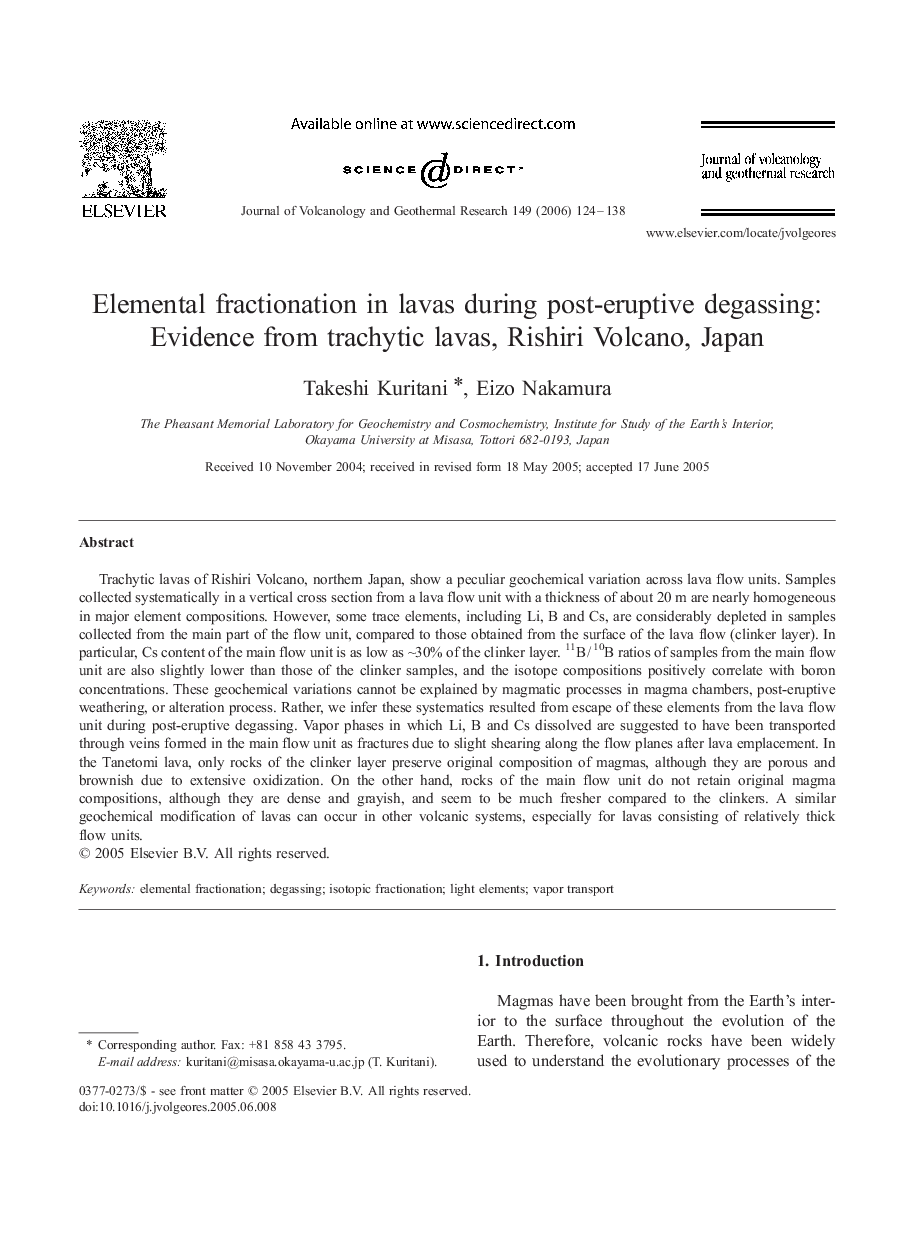| Article ID | Journal | Published Year | Pages | File Type |
|---|---|---|---|---|
| 4714929 | Journal of Volcanology and Geothermal Research | 2006 | 15 Pages |
Trachytic lavas of Rishiri Volcano, northern Japan, show a peculiar geochemical variation across lava flow units. Samples collected systematically in a vertical cross section from a lava flow unit with a thickness of about 20 m are nearly homogeneous in major element compositions. However, some trace elements, including Li, B and Cs, are considerably depleted in samples collected from the main part of the flow unit, compared to those obtained from the surface of the lava flow (clinker layer). In particular, Cs content of the main flow unit is as low as ∼30% of the clinker layer. 11B / 10B ratios of samples from the main flow unit are also slightly lower than those of the clinker samples, and the isotope compositions positively correlate with boron concentrations. These geochemical variations cannot be explained by magmatic processes in magma chambers, post-eruptive weathering, or alteration process. Rather, we infer these systematics resulted from escape of these elements from the lava flow unit during post-eruptive degassing. Vapor phases in which Li, B and Cs dissolved are suggested to have been transported through veins formed in the main flow unit as fractures due to slight shearing along the flow planes after lava emplacement. In the Tanetomi lava, only rocks of the clinker layer preserve original composition of magmas, although they are porous and brownish due to extensive oxidization. On the other hand, rocks of the main flow unit do not retain original magma compositions, although they are dense and grayish, and seem to be much fresher compared to the clinkers. A similar geochemical modification of lavas can occur in other volcanic systems, especially for lavas consisting of relatively thick flow units.
